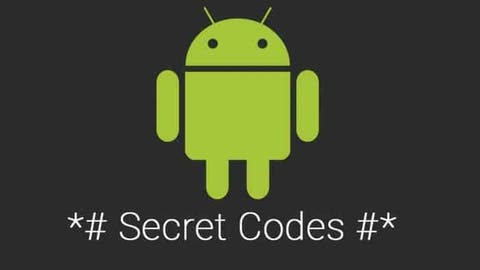Do you know the USSD codes? What about “Android secret codes”? These are characters to type on your phone to access information, do tests or access hidden menus. Let’s see what it is and how to use it.
Let’s start by explaining what is USSD (Unstructured Supplementary Service Data). It is a protocol that allows information to be sent across the network. It is for example possible to recharge your phone in call credit in certain countries. Thanks to this protocol, we buy a card, we scratch and we enter the code.
In the same way, there are some codes that we can use to access information, do tests or access hidden menus in our Android phones. Some codes will refuse to work on certain models or brands of smartphones, but you can try them carefully. You could lose data or damage your device. Do the manipulations only if you are absolutely sure of yourself …
Useful Android USSD codes
To enter these codes just pull up the default dialer app and use your chubby fingers to press the correct buttons.
| Code | Description |
|---|---|
| *#*#4636#*#* | Display information about Phone, Battery and Usage statistics |
| *#*#7780#*#* | Resting your phone to factory state-Only deletes application data and applications |
| *2767*3855# | It’s a complete wiping of your mobile also it reinstalls the phone’s firmware |
| *#*#34971539#*#* | Shows complete information about the camera |
| *#*#7594#*#* | Changing the power button behavior-Enables direct power off once the code enabled |
| *#*#273283*255*663282*#*#* | For a quick backup to all your media files |
| *#*#197328640#*#* | Enabling test mode for service activity |
| *#*#232339#*#* OR *#*#526#*#* | Wireless Lan Tests |
| *#*#232338#*#* | Displays Wi-Fi Mac-address |
| *#*#1472365#*#* | For a quick GPS test |
| *#*#1575#*#* | A Different type GPS test |
| *#*#0283#*#* | Packet Loopback test |
| *#*#0*#*#* | LCD display test |
| *#*#0673#*#* OR *#*#0289#*#* | Audio test |
| *#*#0842#*#* | Vibration and Backlight test |
| *#*#2663#*#* | Displays touch-screen version |
| *#*#2664#*#* | Touch-Screen test |
| *#*#0588#*#* | Proximity sensor test |
| *#*#3264#*#* | Ram version |
| *#*#232331#*#* | Bluetooth test |
| *#*#7262626#*#* | Field test |
| *#*#232337#*# | Displays Bluetooth device address |
| *#*#8255#*#* | For Google Talk service monitoring |
| *#*#4986*2650468#*#* | PDA, Phone, Hardware, RF Call Date firmware info |
| *#*#1234#*#* | PDA and Phone firmware info |
| *#*#1111#*#* | FTA Software version |
| *#*#2222#*#* | FTA Hardware version |
| *#*#44336#*#* | Displays Build time and change list number |
| *#06# | Display IMEI number |
| *#*#8351#*#* | Enables voice dialing logging mode |
| *#*#8350#*#* | Disables voice dialing logging mode |
| ##778 (+call) | Brings up Epst menu |
Developer Options
Want even more hidden menus? Did you know that Android offers well-hidden Developer Options? Go to Settings, then to About phone (or System> About phone ), find the Build (or version) number and tap it 7 times. You will see a message stating that Developer Options are available. You will find them in System or directly in the Settings menu. Here you can activate Debug Mode, manage Bluetooth, configure the animation scales, the notch, the background apps, and a lot of other things…
Follow Gizchina.com on Google News for news and updates in the technology sector.


Do the codes have any side effects?